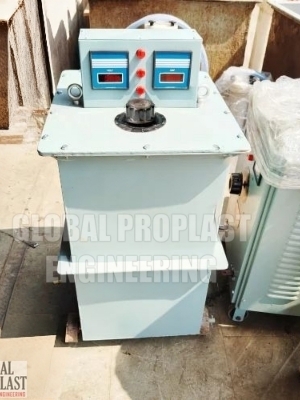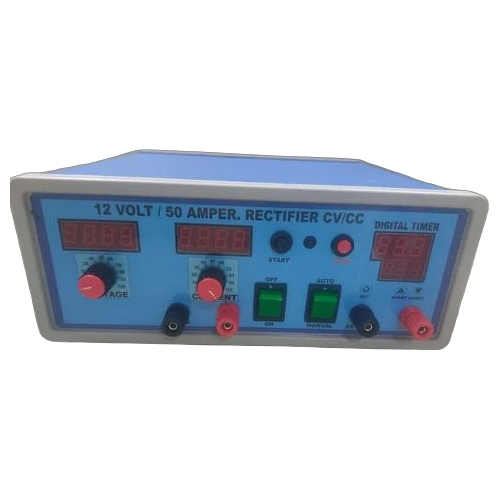Industrial Electroplating Rectifier
Product Details:
X
Product Description
An industrial electroplating rectifier is a specialized electrical device used in electroplating processes. It converts alternating current (AC) into direct current (DC) to supply the required voltage and current for electroplating operations. Electroplating is a process used to coat an object with a thin layer of metal, typically for decorative or protective purposes. Basic Details: 1. Function: The primary function of an electroplating rectifier is to convert AC voltage into DC voltage with precise control of voltage and current levels. This DC power source is essential for the electroplating process. 2. Industrial Use: These rectifiers are used in various industries, including automotive, electronics, jewelry, aerospace, and manufacturing, for applications such as metal finishing, circuit board manufacturing, and decorative coating. 3.Voltage and Current Control: Electroplating rectifiers are equipped with controls to adjust the output voltage and current, allowing operators to tailor the plating process to specific requirements. Specifications/Additional Details: Output Voltage: Electroplating rectifiers are available in a range of output voltage ratings, typically from a few volts to several hundred volts, depending on the specific plating requirements. 4.Output Current: The output current capacity of these rectifiers can vary significantly, ranging from a few amperes to thousands of amperes, depending on the size and application. 5.Voltage Regulation: Good voltage regulation is critical for maintaining a stable plating process. Precision voltage regulation ensures consistent and uniform plating results. 6.Current Regulation: Current regulation is equally important to maintain a constant and controlled flow of electric current through the plating bath. It helps achieve consistent coating thickness. Rectification Type: Electroplating rectifiers can use various rectification methods, including bridge rectifiers, SCR (Silicon Controlled Rectifier) rectifiers, and other solid-state rectifiers. The choice of rectification method affects the control and efficiency of the rectifier 7.Control Features: Modern rectifiers are equipped with digital or analog control systems that allow precise adjustment of voltage and current. They may also include programmable settings, timers, and displays to monitor and control the plating process. Cooling System: Many industrial 8.electroplating rectifiers incorporate cooling systems to dissipate heat generated during operation, ensuring reliable and continuous performance. 9.Safety Features: Safety features such as overcurrent protection, overvoltage protection, short-circuit protection, and thermal overload protection are crucial for the safe operation of rectifiers. Size and Form Factor: The physical size and form factor of electroplating rectifiers can vary widely, from compact benchtop units to large floor-mounted systems, depending on the capacity and application. Efficiency: Higher efficiency rectifiers are desirable as they minimize energy consumption and heat generation during the plating process. 10.Remote Control: Some rectifiers offer remote control capabilities, allowing operators to monitor and adjust settings from a distance. 11. Compliance: Ensure that the electroplating rectifier complies with relevant safety and regulatory standards in your region. 12. Maintenance: Consider ease of maintenance, availability of spare parts, and technical support when selecting an electroplating rectifier.Tell us about your requirement

Price:
Quantity
Select Unit
- 50
- 100
- 200
- 250
- 500
- 1000+
Additional detail
Mobile number
Email






 Send Inquiry
Send Inquiry Send SMS
Send SMS